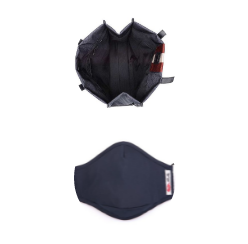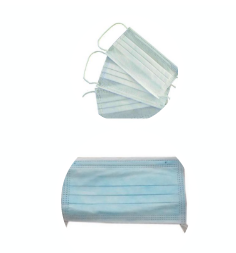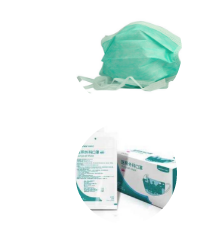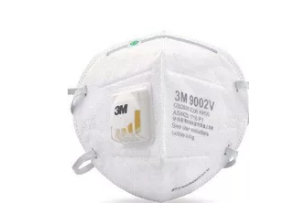In the combat against the pneumonia-causing virus that that originated in Wuhan, China in early January, Tong University has taken measures to prevent the coronavirus outbreak on campus.
A“four-earliest possible” prevention policy of earliest possible detection, reporting, quarantine and treatment has been implemented. Meanwhile, a three-level disease prevention system is also in place. There is a public health monitoring person for each student dorm, community and class, a public health team for each college or department, and public health committee for the university. People involved in the system are responsible for checking and monitoring the public health and safety, and taking measures for disease prevention and food safety. They are also responsible for collecting and stocking materials for disease prevention and public health, and prepare necessary facilities; and for making timely reports to the university leaders, the Shanghai Education Commission and the Shanghai and Yangpu District Centers for Disease Prevention and Control.
In addition, a multi-level information monitoring and reporting system has been established which is composed of medical staff from the University Hospital, public health directors from schools and departments, and public health monitoring persons from dormitories, communities, classes and food centers.
No matter where you are, do not panic. We are here to offer our help in protecting your health and safety!
The contact information of the University Hospital is as follows:
Tel. 65983226 (office hours)
The following people are available during non-office hours:
ZHANG Ying: 13917787051
ZHANG Liqin (Siping Campus) : 13681828427
ZHENG Luqing (Jiading Campus) :13641686496
We have contacted students from Wuhan who have not yet returned to their hometown. For those who are willing to stay on campus, the university will provide meal vouchers to them during the winter holiday. Please contact your tutor to get the meal vouchers based upon your own needs.
How can we reduce the risk of infection caused by the novel coronaviruses? How to protect oneself properly? According to the Shanghai Center for Disease Prevention and Control, one of the most effective ways to prevent droplet infection and reduce the risk of infection and transmission of coronavirus is covering your mouth and nose with tissues and handkerchiefs when coughing or sneezing. Meanwhile, an important means to reduce "pathogen" exposure and reduce the risk of infection is to choose and wear proper face masks.
How to cough properly is specifically addressed in the preventative measures suggested by the world health organization (WHO) to reduce the risk of new coronavirus infections. This is one of the most effective ways to reduce the risk of infection and transmission of the coronavirus, which should be followed by people when coughing or sneezing, no matter whether you are ill or not.
What is the standard “cough etiquette” then?
When you cough or sneeze, avoid crowds and cover your mouth and nose with a tissue or handkerchief to prevent droplet or saliva from splashing or splattering. Avoid covering your mouth and nose with your hands, which may pick up germs and spread them to others.
If you can't find a handkerchief or a tissue, you can cover your mouth and nose with the inside of your sleeve. Bend your elbow and bring your sleeve closer to your nose and mouth, which will limit the spray of germs to either your skin or your sleeve which is dry and less likely to be in contact with other objects. This will effectively block the spread of pathogenic microorganisms.
Don't throw away the tissue after use. Throw it in the trash. Wash your hands immediately after coughing or sneezing or disinfect them with a disinfectant.
If you have respiratory problems, wear a face mask when you go outdoors and keep at least one meter away from others. Don't speak too loudly to avoid "droplet infection".
Proper selection and wearing of face masks is also an important means to minimize "pathogen" exposure and reduce the risk of infection. Then, how should we choose and wear a face mask to achieve the protective effect?
There are four main types of face masks:
1) Fabric face mask

People usually use more of this face mask. But it cannot reduce the risk of infection by respiratory infectious diseases when worn by healthy people in public places. This type of masks is generally recommended to sick people, for it can reduce the risk of spreading the virus to the environment in public places when they wear it.
2) Medical face mask

This pleated face mask is mostly effective in pathogen filtration; but it is less effective for waterproof and particle filtration purposes. Its protective effect is greatly reduced when in close contact with patients with symptoms of cough, sputum and sneeze.
3) Surgical face mask

This pleated face mask is highly effective because of its three-layered three-dimensional mesh design. People can use it for most respiratory tract infectious diseases. It is important to note that because of the similar appearance with the medical face mask, it is often difficult for people to distinguish between medical and surgical face masks. Here is a tip for you. The surgical mask is made in accordance with the pharmaceutical standard YY0469-2011, which is mentioned in the user guide. You may ask the pharmacy for details when purchasing it.
4) Anti-haze face mask

In addition to face masks for pathogens, there are also face masks available for smog, i.e. disposable medical face masks.
How to choose a mask?
If you suspect you have a respiratory infection, you are strongly advised to wear a fabric, medical or surgical face mask when you go outdoors. Please avoid public places during your illness.
Please wear a medical or surgical face mask to reduce the risk of respiratory infections if you frequent public places or accompany people to hospitals.
In addition to choosing the right face mask, it is also important to pay attention to the following three points for protective purposes:
1. Clean the fabric mask after each use. Other types of face masks are disposable and cannot be worn repeatedly.
2. Wear the face mask properly. For the surgical mask, tighten the clip on the mask on the nose, expose the colorful side to people, and press the clip hard to filter particles and pathogens.
3. Wash hands before wearing or after removing the face mask each time.
The correct way of putting on the face mask is as follows:
https://v.qq.com/x/page/q3054wkh95x.html
It is relatively complicated to put on and remove the disposable face masks, since specific steps must be followed. Otherwise, the face mask may not protect you, but even result in secondary pollution.
Here are some tips for you:
https://v.qq.com/x/page/b305495w2mk.html
In case when you suffer from symptoms such as fever and short of breath, you can go to one of the 110 hospitals where fever clinic is available.
https://mp.weixin.qq.com/s/U3GngNeGF94XPTCwPyP2bA
We can certainly tide it over
as long as we row together towards the same goal
Source:https://en.tongji.edu.cn/info/1008/3986.htm
